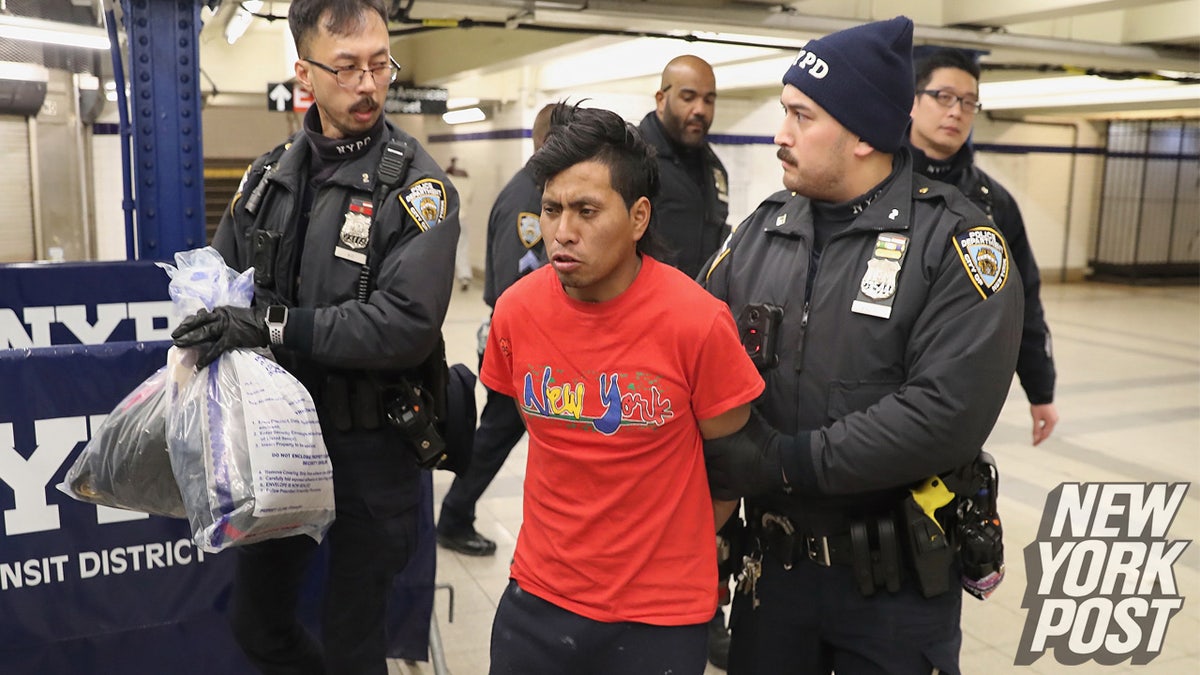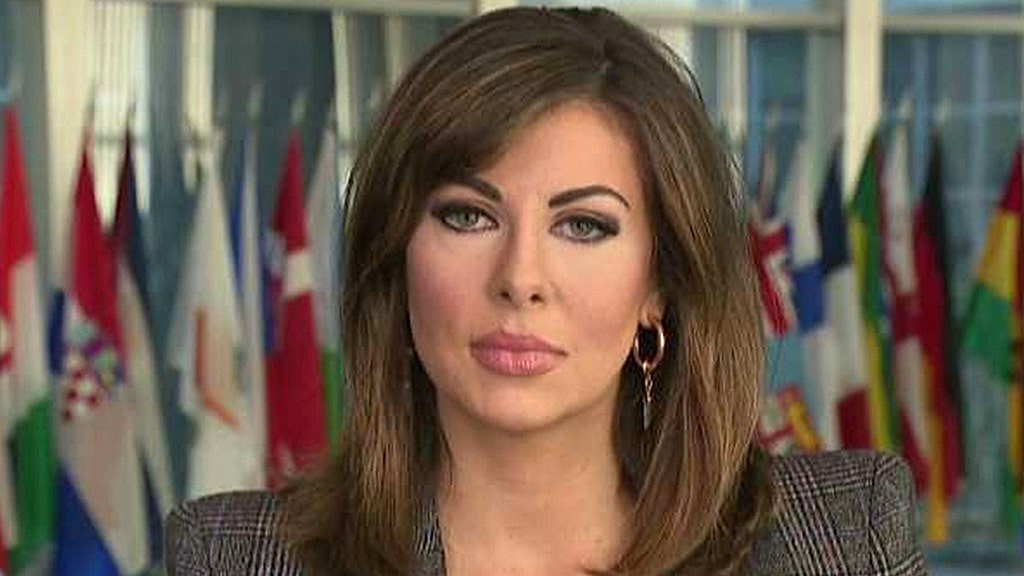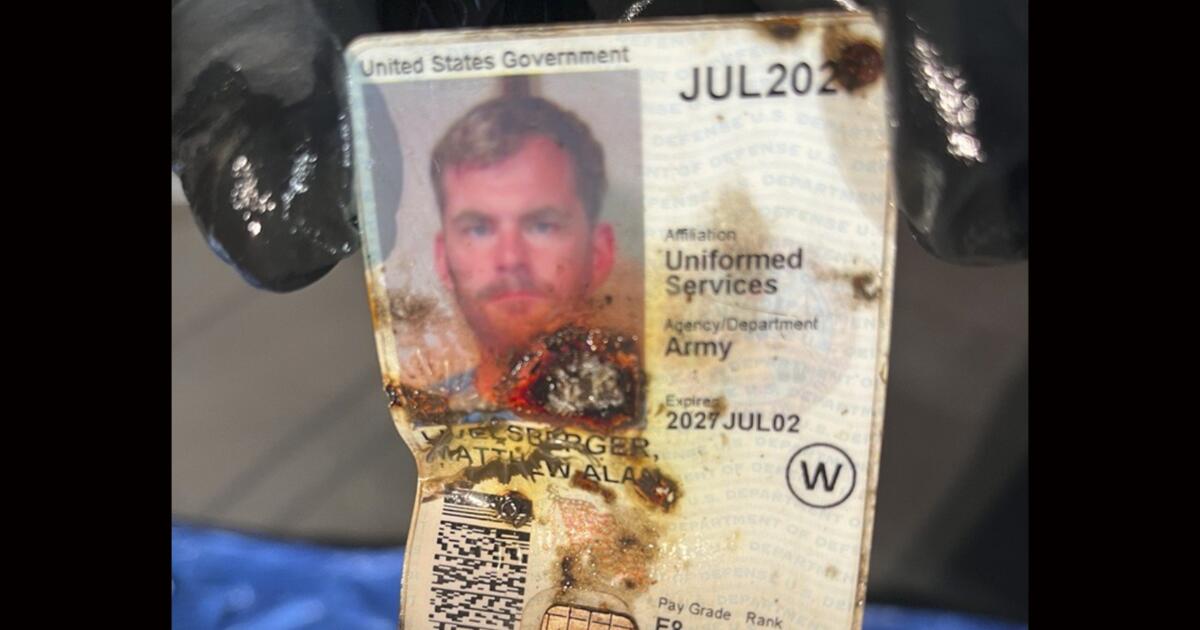Northeast
Woman burned to death in horrific subway attack identified: police

The woman who was heinously burned alive in a New York City subway car last week has been identified as a 57-year-old woman from New Jersey, Fox News Digital has learned.
Police tell Fox News Digital the woman has been identified as Debrina Kawam of Toms River, a township and coastal town located on the Jersey Shore in Ocean County. Kawam was lit on fire and burned to death on a subway train in Brooklyn, New York, on Dec. 22.
Officials were unable to identify Kawam’s body for days after the attack because she was so severely burned. The NYPD did not provide an official cause of death.
Police investigate at the Coney Island-Stillwell Avenue Station in Brooklyn after a woman aboard a subway car was set on fire and died in New York, United States on Dec. 22, 2024. Police believe the woman had been sleeping aboard the train when a man approached her and set her on fire. She was pronounced dead at the scene. (Kyle Mazza/Anadolu via Getty Images)
SANCTUARY CITY NEW YORK PRESSURED TO MAKE DRASTIC CHANGE AFTER ILLEGAL MIGRANT ALLEGEDLY BURNS WOMAN ALIVE
The homeless nonprofit Coalition for the Homeless previously stated that the victim may have been homeless at the time of her death. Police were unable to confirm if she was homeless.
The New York Post, citing police sources, reports that Kawam had been living in New York City shelters since at least Sept. 9 and had been given a bed at the Franklin Williams Women’s Shelter in the Bronx on Nov. 30 but left on Dec. 2.
WATCH: Eric Adams discusses subway burning victim Debrina Kawam
On Tuesday, New York City Mayor Eric Adams said he did not have any additional information on Kawam, other than that she had a brief stint in the city’s homeless shelter system.
“Our hearts go out to her family. A horrific incident to have to live through,” Adams told reporters at a daily press briefing.
“Just watching that tape, just really I couldn’t watch it all the way through. It was just a bad incident and it impacts on how New Yorkers feel.”
He said that homeless people should not be living in the subway system and instead should be in a place of care.
“And no matter where she lived, that should not have happened,” Adams said. “But we have far too many people that believe, they should be on our subway system and living on our streets, and we can’t throw our hands up and allow that to happen.”
Sebastian Zapeta, 33, a previously deported immigrant from Guatemala, was arrested hours after the horrific incident which shocked the nation.
He’s been indicted on one count of murder in the first degree, three counts of murder in the second degree and one count of arson in relation to the horrific case.

NYPD officers escort Sebastian Zapeta from an F train in Coney Island from a precinct in Lower Manhattan on Dec. 22, 2024. (Courtesy: G.N. Miller/New York Post)
CRITICS WARN OF ‘DANIEL PENNY EFFECT’ AFTER WOMAN BURNED ALIVE ON NYC SUBWAY CAR AS BYSTANDERS WATCHED
Surveillance video of the attack showed the suspect approaching the woman, who was sitting motionless and may have been sleeping, while aboard a stationary F train at the Coney Island-Stillwell Avenue subway station and then setting her on fire.
Police say Zapeta used a lighter to ignite the victim’s clothing, which became fully engulfed in a matter of seconds. Video from the scene shows Kawam standing while on fire, indicating she was alive when set on fire.
The suspect then stayed on the scene and sat on a bench just outside the train car, as officers and a transit worker extinguished the flames. The victim was pronounced dead at the scene.

Sebastian Zapeta, accused of setting a woman on fire inside a New York City subway train, appears in court on Dec. 24, 2024, in New York. (AP Photo/Curtis Means via Pool)
Zapeta faces life without the possibility of parole on the murder in the first-degree charge, while second-degree murder carries 25 years to life, Brooklyn District Attorney Eric Gonzalez said earlier this week.
“This was malicious. A sleeping, vulnerable woman on our subway system,” Gonzalez added. “This act surprised many New Yorkers as they were getting ready to celebrate the holidays but now New Yorkers are waking up and understanding that on the 22nd of this year, this happened. This was intentional and we hope to prove this.”
Adams’ office tells Fox News Digital that the mayor has directed the NYPD and ICE’s Homeland Security Investigations (HSI) team to explore criminal charges against Zapeta under the federal arson statute.
Zapeta was apprehended by Border Patrol and subsequently deported by the Trump administration on June 7, 2018, after he crossed illegally into Sonoita, Arizona, a week prior, ICE spokesperson Jeff Carter tells Fox News. Zapeta later re-entered the U.S. illegally on an unknown date and location, Carter said.
Read the full article from Here

New York
N.Y.C. Congestion Pricing Begins on Sunday

Starting Sunday, most drivers will have to pay $9 to enter the busiest part of Manhattan. That much is clear.
But almost everything else about New York City’s congestion-pricing plan, the first of its kind in the United States, continues to be fiercely debated.
Transportation, business and civic leaders, as well as long-suffering subway and bus riders, consider the tolling plan a long-overdue step toward unclogging the city’s gridlocked streets, raising billions of dollars for an aging transit system and encouraging a more sustainable future with fewer cars.
“Congestion pricing will finally tackle the gridlock that is slowing down emergency vehicles, polluting air and wasting people’s time in traffic,” said John J. McCarthy, the chief of policy and external relations for the Metropolitan Transportation Authority, which will oversee the program.
But suburban commuters, residents of the city’s so-called transit deserts and public officials of both parties say congestion pricing will do little to reduce traffic while punishing drivers from outside Manhattan with few other travel options. These critics have called the tolling plan a money-grab by the M.T.A., a state agency with a history of financial problems.
“This is just simply a misguided policy,” said Ed Day, the Rockland County executive. He has sued to halt the program, which, he said, “raises serious questions about fairness, priorities and accountability.”
The New York program is being closely followed by officials and advocates in other U.S. cities who are grappling with their own traffic problems in a country where the car is king. Several cities, including Washington and San Francisco, explored the concept before the coronavirus pandemic interrupted those efforts.
Congestion pricing is being introduced at a time when New York City’s streets are more clogged than ever. From Fifth Avenue to the Brooklyn-Queens Expressway, traffic has rebounded sharply after largely disappearing during the depths of the pandemic.
The city’s traffic is now so thick that New York was named the world’s most congested city in a 2023 traffic scorecard compiled by the transportation data analytics firm INRIX, beating out London, Paris and Mexico City.
Drivers lost 101 hours on average sitting in traffic in New York that year, more than double the national average of 42 hours, according to the scorecard. All that idle time translated to $1,762 per driver in lost wages, productivity and other costs, and a $9.1 billion overall loss for the city.
Samuel I. Schwartz, a former city traffic commissioner who supports congestion pricing, said that any improvement in traffic would be welcome. Within the congestion zone, the average travel speed has dropped to under 7 miles an hour for the first time since records were kept in the 1970s, he said. The slowest traffic crawls along at just 4.7 miles per hour in Midtown.
“Traffic is worse than it’s ever been,” he said.
William Vickrey, a Columbia University professor and winner of the Nobel in economic sciences, came up with the idea for congestion pricing in the 1950s. But it has languished in New York even as traffic-choked cities around the world, including London, Stockholm and Singapore, embraced it.
The idea gained momentum in New York briefly in 2007 when Michael R. Bloomberg, the mayor at the time, unveiled a congestion-pricing plan, only to see it falter in the State Legislature. A decade later, Gov. Andrew M. Cuomo revisited it amid a crisis in subway service. The tolling plan was finally approved as part of the 2019 state budget.
Shortly before the plan was to start in June, Governor Kathy Hochul, a Democrat, delayed it, saying the tolls could hurt the city’s economy. Some critics said the plan, which polls showed was broadly unpopular, would hurt Democratic candidates in the November election.
Ms. Hochul, under pressure from transit advocates, revived congestion pricing in November. To make the tolls more palatable, she slashed them 40 percent across the board.
Most passenger cars will now have to pay $9 to enter Manhattan south of 60th Street at peak hours, rather than the original $15. Small trucks will have to pay $14.40; large trucks, $21.60. Discounted rates will be offered overnight when there is less traffic.
M.T.A. leaders expect the new tolls to help generate $15 billion through bond financing that will pay for a long list of transit repairs and improvements, including modernizing subway signals and stations and expanding the electric bus fleet.
The plan has been politically contentious with many Republicans, and some Democrats, calling it another tax on drivers. President-elect Donald J. Trump has vowed to kill it when he takes office this month, saying it would drive visitors and businesses from Manhattan.
At least 10 lawsuits have been filed seeking to keep congestion pricing from taking effect. The plaintiffs span an array of opponents, including Vito J. Fossella, the Staten Island borough president, Michael Mulgrew, the president of the United Federation of Teachers, and the Trucking Association of New York, a trade group representing delivery companies.
The latest legal challenge to the program came Friday when New Jersey officials sought a last-minute injunction based on what they said was congestion pricing’s potential environmental impact on their state. The judge, who last week ordered federal transportation officials to review and explain some aspects of the program, denied the motion.
It will most likely be unclear for some time whether the tolls significantly reduce traffic and by how much. Lowering them will probably deter fewer drivers.
State officials said the original plan was expected to reduce the number of vehicles in the congestion zone by roughly 17 percent. They have not specified how the scaled-back program will compare except to say they expect it to cut traffic by at least 10 percent.
Mr. Day, of Rockland County, and other opponents have criticized the toll prices, saying that drivers will pay the same rates no matter how much time they spend in the congestion zone, or how much they drive around inside it and contribute to congestion.
Last week, Ms. Hochul ruled out a surge pricing option that would have allowed for a 25 percent surcharge on heavy traffic days.
The tolling plan also does not directly charge drivers and owners of for-hire vehicles, which have exploded on city streets since Uber’s arrival in 2011. Instead, a small per-trip fee — $1.50 for Ubers and Lyfts; 75 cents for taxis — will be added to each fare and paid by passengers.
Many supporters believe the tolling program will create an important long-term revenue stream for transit improvements.
“Congestion pricing is a very good way of raising money for the M.T.A.,” said Rachael Fauss, a senior policy adviser for Reinvent Albany, a government watchdog group. “It’s a revenue source that isn’t tied to ridership. This is exactly the type of financing you want because it’s a stable, proven revenue source.”
Opponents counter that the M.T.A. should find better ways to spend the money it already has. The critics fault the authority for costly operations and spending on projects that routinely go over budget.
M.T.A. officials have said they have improved efficiency in recent years, including on some of their biggest projects, like an expansion of the Long Island Rail Road in 2022 that was completed $100 million under budget.
Now, with hours to go before the tolling program becomes reality, both sides of the congestion pricing divide are getting ready. Some supporters planned to gather early Sunday at a tolling site along 60th Street to mark the official start of the program.
Mr. Schwartz will not be there. After decades of calling for congestion pricing, he was not expecting it to finally happen while he was away on vacation in Aruba for the holidays.
On Friday afternoon, Mr. Schwartz emailed: “I’ve got my bottle of champagne on ice!”
Wesley Parnell contributed reporting.
Boston, MA
Save the dates for these Jan. Boston arts events

It’s January. Cold. Dark. Holiday fun is behind us. But wait! There are very good things about January. Like all the holiday “fun” is finally behind us.
What’s ahead? Loads of free time and amazing arts to fill up the calendar. Here are a few faves to warm your heart and sway your soul.
Beethoven & Romanticism
Symphony Hall, Boston Symphony Orchestra
All month long, the BSO and its maestro, Andris Nelsons, presents this Beethoven festival. The heart of fest is the complete cycle of the composer’s nine symphonies, performed in order at Symphony Hall for the first time since 1927. Not to miss, No. 9 and “Ode to Joy” featuring an astounding guest list — soprano Amanda Majeski, mezzo-soprano Tamara Mumford, tenor Pavel Černoch, and baritone Andrè Schuen. Starts Jan. 8, bso.org
“Ain’t No Mo”
Calderwood Pavilion, SpeakEasy Stage Company/Front Porch Arts Collective
Dark, smart, funny, and sadly timely, this one-act from writer Jordan E. Cooper examines what it is to be Black in America. The satire has the U.S. government “solving racism” by offering Black Americans a free one-way ticket to Africa. It’s Black drag queen and flight attendant Peaches job to manage the passengers leaving from Gate 1619. Starts Jan. 10, frontporcharts.org
Boston Celtic Music Festival
Multiple Venues
Club Passim presents its 22nd annual Boston Celtic Music Festival in mid-January. A few friends are lending a hand. Along with shows at Passim, music, song, and dance traditions from Irish, Scottish, Cape Breton, Quebecois, and other Celtic communities will be on stages at Somerville Theatre, Crystal Ballroom, The Burren, and The Rockwell. Starts. Jan. 16, passim.org/bcmfest
“Peter Pan”
Citizens Opera House, Broadway in Boston
A new twist on an old classic, this version of “Peter Pan” hasn’t grown up but the material has. The cruel and cliched depictions of Native peoples and women have been removed thanks to a book update by Sicangu Lakota Nation member and 2020 MacArthur Fellow Larissa FastHorse. What remains is the humor, heart, story, songs, and magic. Director Lonny Price says the new tweak is the perfect gateway to theater for young people. “Part of why I wanted to do this is that it will be kids’ first experience in the theater, and I want them not only to fall in love with ‘Peter Pan,’ ” he told the Associated Press, “but to fall in love with the theater and to come back.” Starts Jan. 21, boston.broadway.com
Sarah Silverman
The Wilbur
Laugh it off. Or try to. 2025 is going to be a lot and Sarah Silverman knows that. On Jan. 25, join the funniest, dirtiest, smartest wit in the stand-up scene for jokes about, well, hmm, it’s hard to list any of the topics she likes to joke about here in print. If Silverman’s not your thing, this month the Wilbur also welcomes Tracy Morgan and Russell Peters. thewilbur.com
Pittsburg, PA
Man arrested on numerous weapons charges in Pittsburg

PITTSBURG — A 27-year-old man suspected of illegally making and selling guns, including assault weapons, was arrested, the Contra Costa County Sheriff’s Office said.
The law enforcement agency said they will be testing the weapons to see if they are linked to any crime or shooting.
The suspect, identified as Diego Vasquez-Gomez, was arrested on Thursday (Jan 2.) when detectives from the Contra Costa County Sheriff’s Office served a search warrant at a residence in Pittsburg. This was part of an ongoing investigation into a shooting at the Contra Costa Fairground in Antioch last September.
The shooting stemmed from an argument in which two suspects opened fire, resulting in a man suffering life-threatening injuries.
Detectives said one of the two suspects had used an illegally manufactured gun during the shooting.
During the search at Vasquez-Gomez’s home, authorities found assault weapons and a short-barrel rifle. Some of the weapons seized did not have serial numbers.
“The weapons will be tested to see if they are linked to any shooting or crimes,” said the Contra Costa County Sheriff’s Office in a news release.
Vasquez-Gomez was booked into the Martinez Detention Facility on charges including manufacturing a short barrel gun, manufacturing and selling of an assault weapon, illegal possession of an assault weapon, unlicensed transfer of a firearm and child endangerment.
Those with information on the case are urged to contact the Investigation Division at (925) 313- 2600, email them at tips@so.cccounty.us, or call (866) 846-3592 to leave an anonymous voice message.
-

 Business1 week ago
Business1 week agoOn a quest for global domination, Chinese EV makers are upending Thailand's auto industry
-

 Health6 days ago
Health6 days agoNew Year life lessons from country star: 'Never forget where you came from'
-
/cdn.vox-cdn.com/uploads/chorus_asset/file/24982514/Quest_3_dock.jpg)
/cdn.vox-cdn.com/uploads/chorus_asset/file/24982514/Quest_3_dock.jpg) Technology6 days ago
Technology6 days agoMeta’s ‘software update issue’ has been breaking Quest headsets for weeks
-

 Business3 days ago
Business3 days agoThese are the top 7 issues facing the struggling restaurant industry in 2025
-

 Politics1 week ago
Politics1 week ago'Politics is bad for business.' Why Disney's Bob Iger is trying to avoid hot buttons
-

 Culture3 days ago
Culture3 days agoThe 25 worst losses in college football history, including Baylor’s 2024 entry at Colorado
-

 News1 week ago
News1 week agoAmerican Airlines lifts ground stop that froze Christmas Eve travelers
-

 World1 week ago
World1 week agoWho is Europe's top investor in space in 2023?













